Many ancient cult niches chiseled in the rocks in the Eastern Rhodopes, especially along Arda River have been attracting the attention of archaeologists and amateur explorers for over a century. However, they are still hiding many secrets. We do not know yet when these niches emerged, whether they date back to the Thracian period, or to an earlier period, what they were used for, whether they were shaped for any religious purpose, or were used as a marking. Most niches emerged in inaccessible areas. They were of great importance to the ancient people who wanted to preserve them over the centuries. Perhaps, they are associated with a religious belief in the transition to afterlife, Hristo Todev contends. Hristo is an economic analyst, an amateur mountaineer and explorer. He has been touring the wild and picturesque areas in the Eastern Rhodopes for years. He studies and makes photos and maps of the stone niches. In his view, these niches date back to the Eneolith. So far I have found nearly 3,600 niches. I suppose that 2% of the niches are still undiscovered, says Hristo. Some of them were hewn into the rocks at an altitude of 50 meters near the village of Dazhdovnitsa, Kardzhali district.
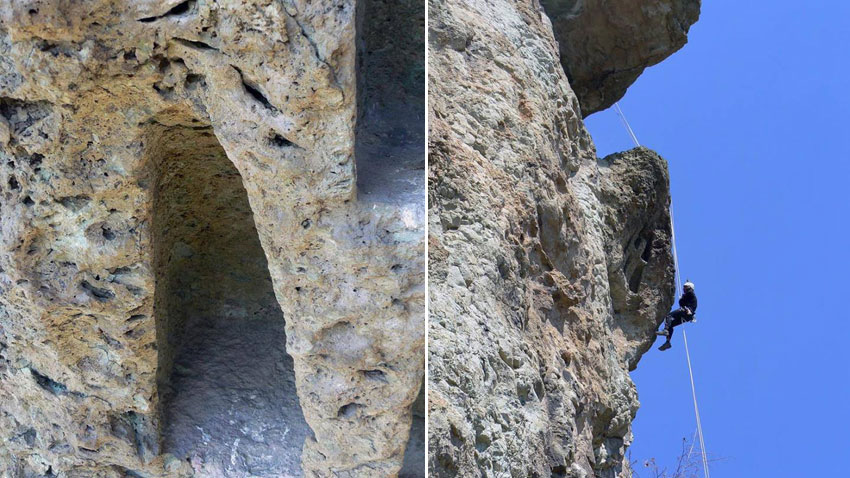
The perfect niche is trapezium-shaped. It is 70-80 centimeters tall and resembles a seashell. This niche is very well shaped and has perfect edges. Many research workers are wondering what the real meaning of these formations was. Perhaps, the people who chiseled out such apertures in the rocks were looking for acoustic or energy effects.
Hristo Todev found an image of a girl’s face on one of the rocks in the stone complex which was probably a result of a human interference on the natural rock formations:
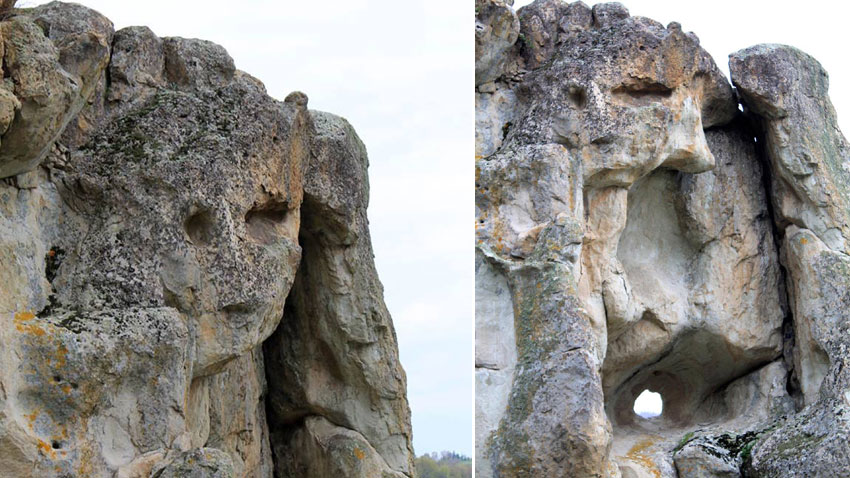
I found a stone chamber just under the girl’s face at an altitude of 20 meters which is also touched by human hand. One can enter the chamber through an aperture chiseled out at the rear. The whole stone complex is huge-nearly 1.5 kilometers long. It consists of many trapezium-shaped niches, apertures and specially shaped pits. I wonder whether this stone chamber is connected with another 40 meter tall rock situated on a nearby flank at a distance of 1.2 kilometers
Hristo Todev also found traces of human interference on a ten meter tall and two meter wide cleft in the opposite rock. Hristo noticed that in different months of the year the sun beams get closer to the stone complex (with the image of a girl’s face) when going through the so-called stone window.
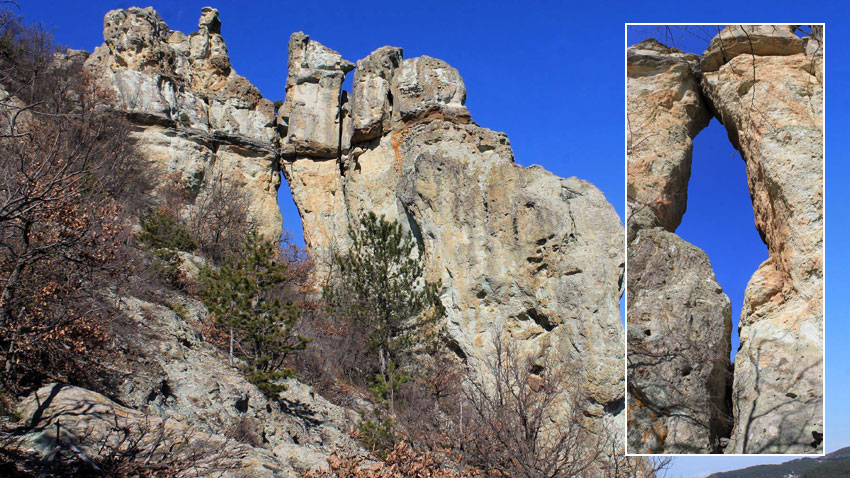
I entered the coordinates in specialized internet sites and made additional measurements and calculations. My theory is that in the shortest day of the year December 21 the sun beam is projected onto the stone chamber in the complex near Dazhdovnista when piercing the stone window. It happens at 4.27 pm or 25-30 minutes before sunset.
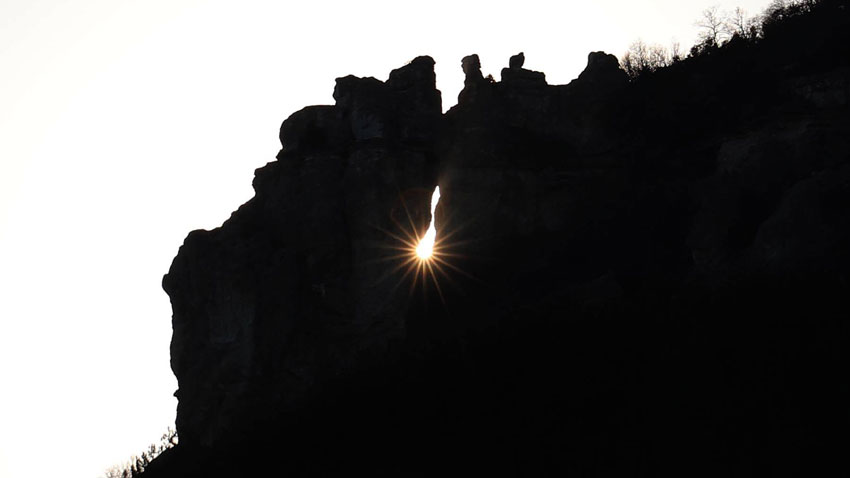
That is why Hristo Todev believes that this area is not merely an ancient cult complex containing trapezium-shaped niches, but also an object which gives us valuable information about the astronomical knowledge of the ancient people who inhabited these lands.
I was amazed by the scale of this giant stone calendar. This year I will go to that place on December 21 to find out whether the sun beam is really projected onto the stone chamber. If so, this would mean that the ancient people had exceptional knowledge of astronomy. They could make a very precise calendar if they knew the shortest day of the year, Hristo Todev specifies and adds:
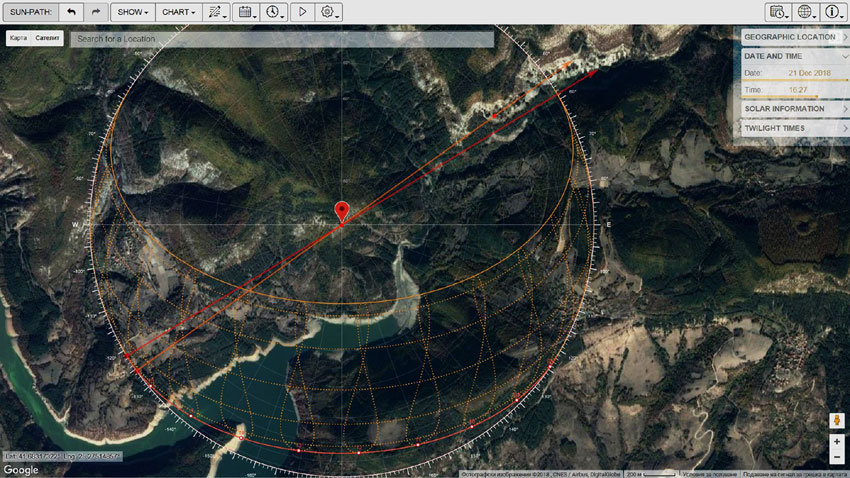
There is another complex with clear astronomical reference points showing the approach of the shortest day of the year. I have no doubt anymore that the signs left in the stone complex near Dazhdovnitsa have an astronomical purpose. That is why, the stone-niche complexes can now be studied in a new and different aspect.
A cross hewn into a rock platform over the highest stone niches with a deviation of only 2%-3% from the four directions is perhaps another important connecting element of the large stone complex.
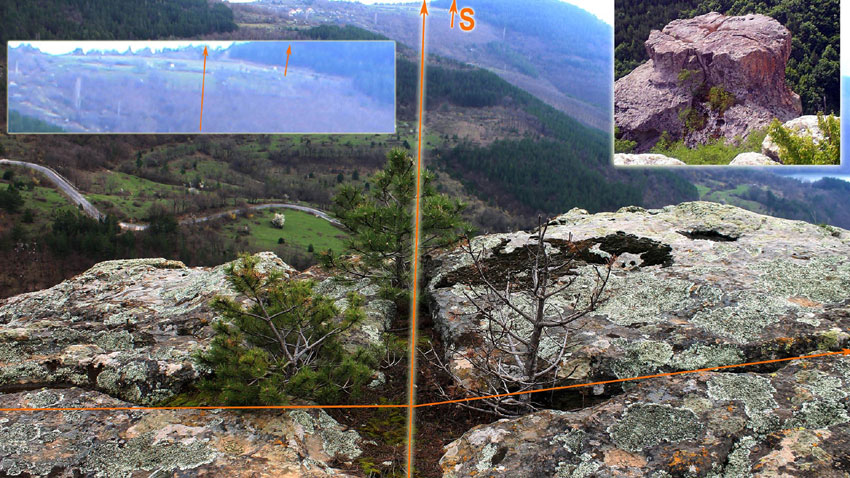
The rocks near Dazhdovnitsa are like an open book for Bulgaria’s history. There are still many unread pages and we are yet to turn them over with curiosity.
English version: Kostadin Atanasov
Photos: private libraryAfter the Liberation in 1878, Bulgaria began to develop at a pace that would make up for the centuries-long absence from the world history map. Young Bulgarians graduated from prestigious European universities and took their knowledge to their homeland..
One of the three biggest Hebrew holidays, Pesach (Passover) starts at sundown (5 PM) on 22 April and ends on 30 April. It is a movable feast, falling after the 14 th day of the spring month of Nisan which starts after the spring equinox with the..
The founder of the Internal Revolutionary Organisation for the Liberation of Bulgaria, Vasil Levski, was the first to involve foreigners in the liberation movement when he set up revolutionary committees in the Bulgarian provinces. The first foreign..
After the Liberation in 1878, Bulgaria began to develop at a pace that would make up for the centuries-long absence from the world history map. Young..

+359 2 9336 661
